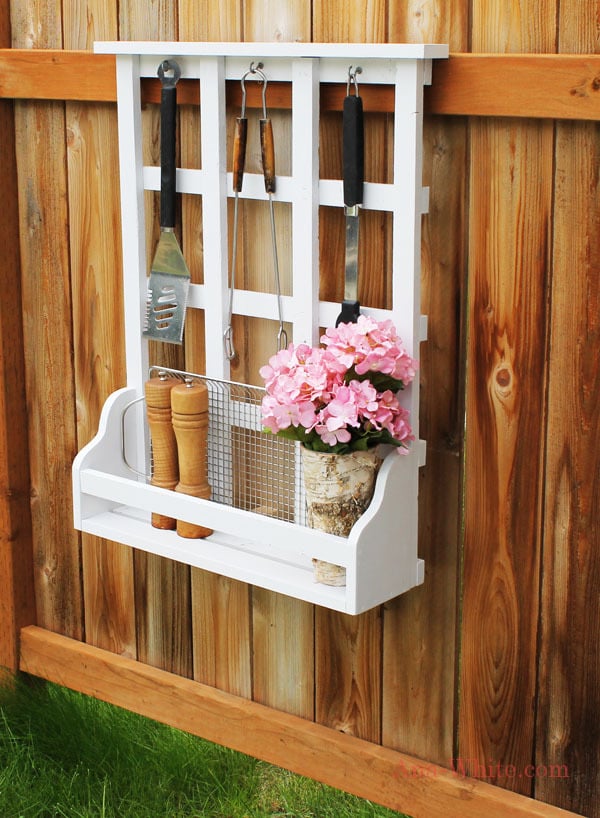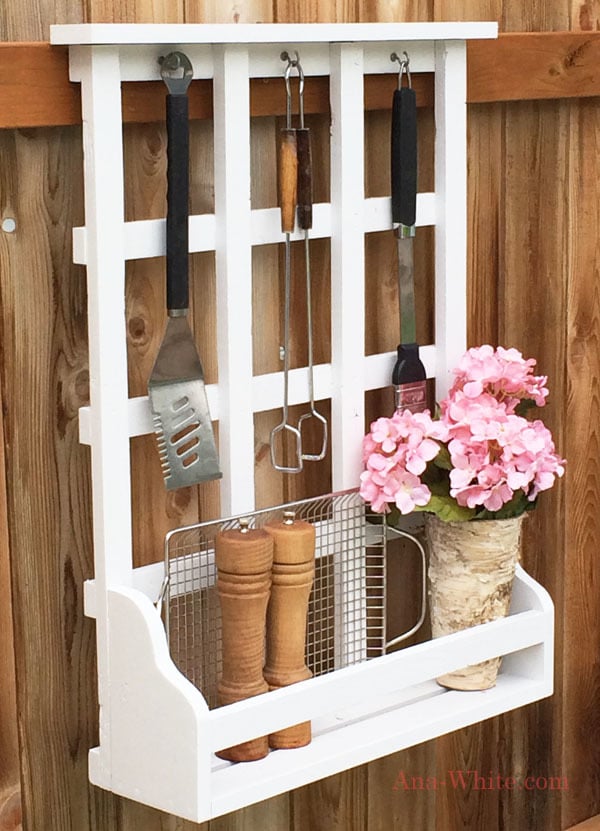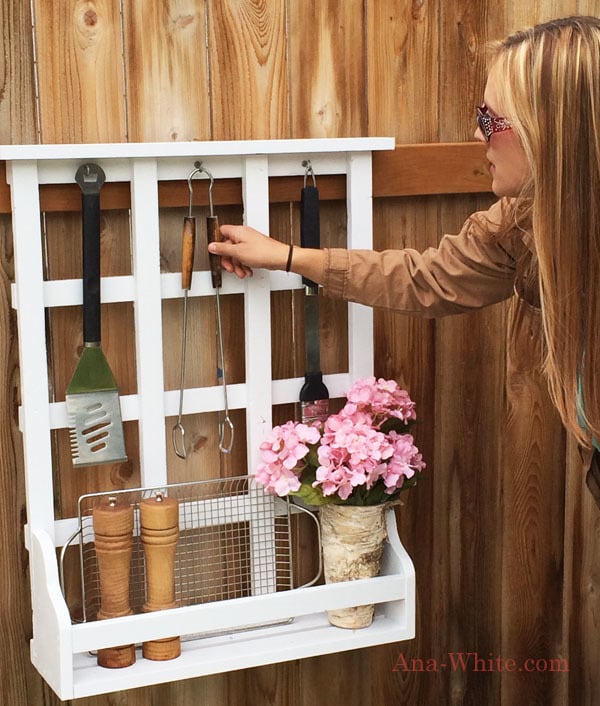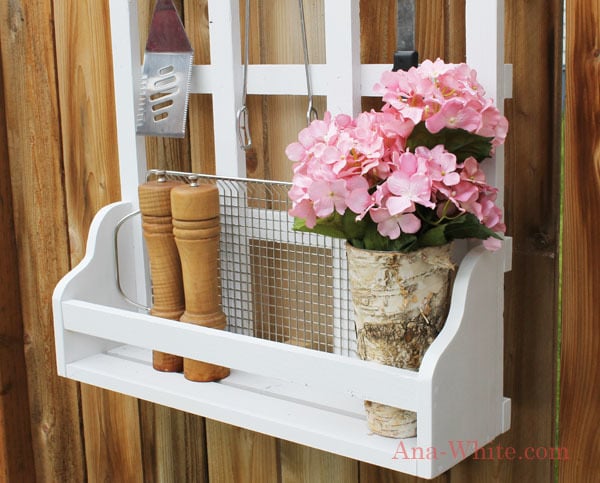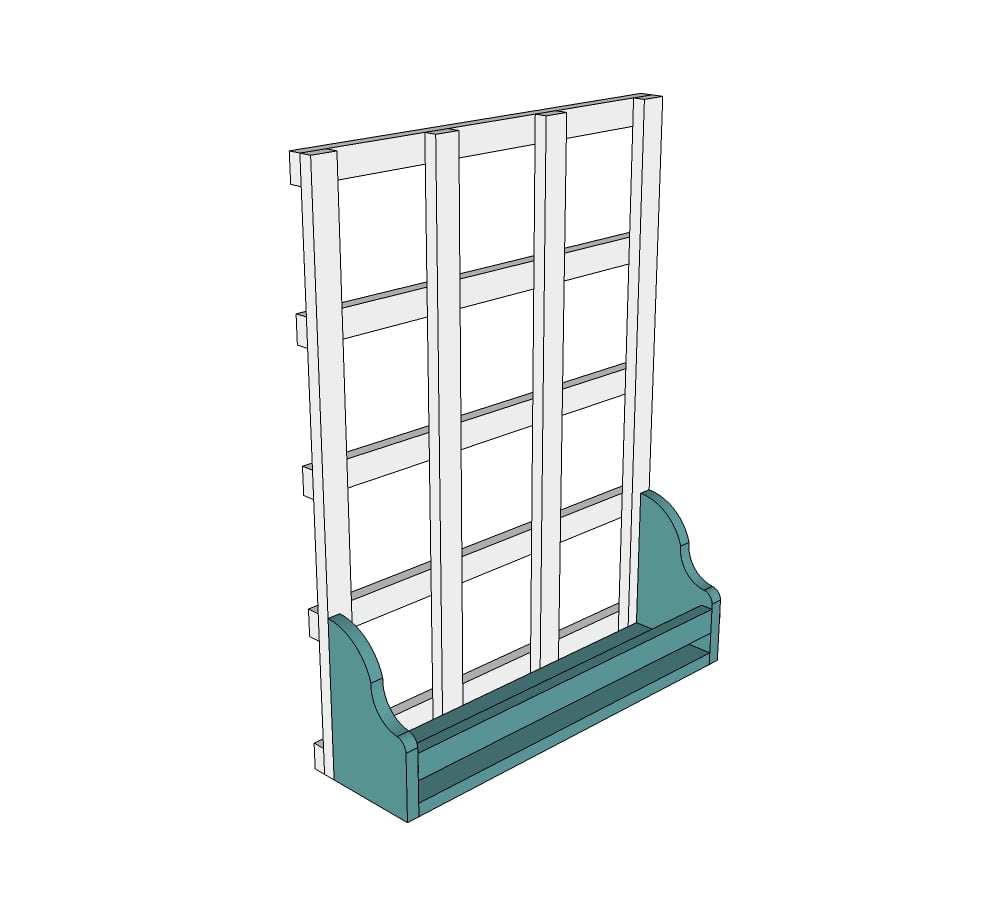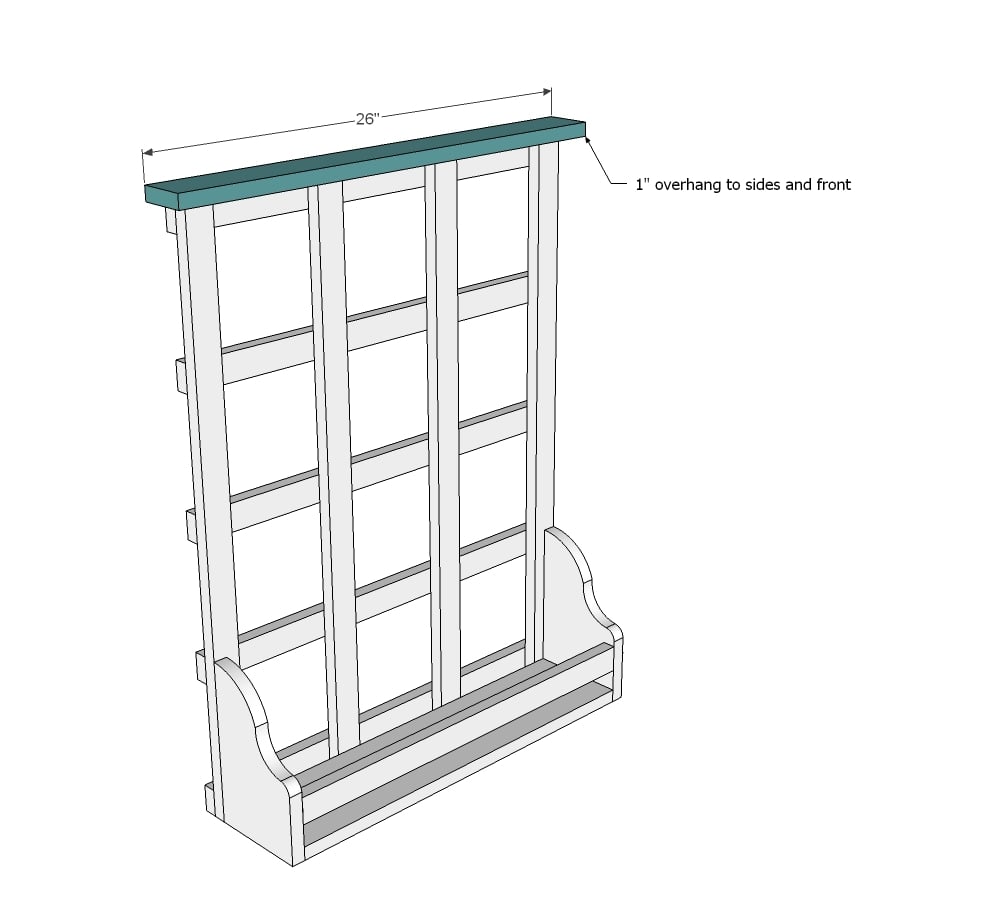Hi DIY Friends! Happy Monday. I hope you had a wonderful weekend!
Remember my beginner builder friend Jen?

Outdoor Rolling Cart plans here
Jen is working with me to post a new, beginner project each week for you! You know, easy projects that don't need a ton of tools and are inexpensive to make.
This week, Jen wanted to tackle a shelf for grilling accessories and utensils. I hope you enjoy this project as much as we did designing it and building it!
Here's from Jen:
Hello everybody! Jen here!
I'm so excited to share today another simple project that can be used indoor or out, to "spice" up your space! And did I happen to mention you will only need about $10 in lumber?

This week we decided on a sweet little accent shelf piece, to add to your collection of backyard fun - or even indoors too. Ana and I really wanted to create a set of hooks that could store grill utensils, with a shelf for spices or more grilling accessories, but also be versatile enough to work throughout the home and seasons.
This shelf is very versatile and can be used for many applications. I am hoping to see how others use it on the “brag board”. How would you use it?
As I was watching Ana create and design this plan, I thought, I might just be the luckiest person on the planet. I love my job and the fact that all I need to do is show up to build! Not a bad gig if you ask me.
So here we go!
This only took 4 boards to build, no time at all to cut, and a super easy plan to follow. Once I cut my boards,

I layed them out on the table face down.
I took the two outside boards for the front and then marked them for placement for the back grid, locked them in place with a couple clamps,

And applied glue,

And then stapled the cross joints together.

Once the back grid was glued and stapled I flipped it over and added the 2 additional boards to the front middle of grid, marked boards, glued and stapled, so I was looking at what looked like a paned window.
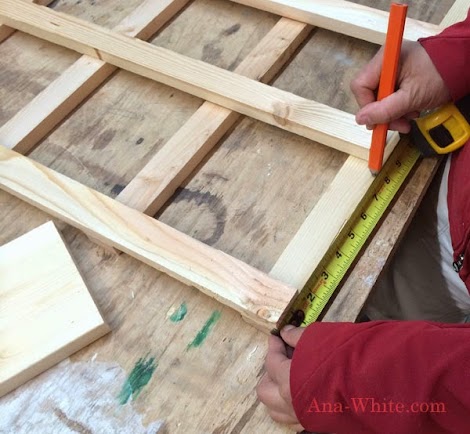
That part done.

Now for the little shelf, lucky for me Ana was there to hold my hand as I used the jig saw to cut the corbels! I was a little nervous, but with her can-do attitude, I had them both cut and sanded in about 10 minutes.
The other option is to buy a couple of simple corbels for this application.

Be sure to choose the right jigsaw bit for your project!
I used a round object, traced three times overlapping, to create this simple corbel shape.

For some extra refining, I clamped the two corbels together once they were cut and sanded them together, so they matched.

Next I needed to attach the bottom slats to the corbels. I clamped one side, glued, pre-drilled a couple holes at each joint, and sunk my screws.

I did the same for the opposite side.

I added the cross board to the front of the shelf in the same manner, and there was my shelf!
Now I needed to attach the shelf to the window part so I turned the window upside down over the shelf, held the outside edges flush, and glued and sunk a few screws on each outside edge.

I stood this puppy up, took my last board to cap the top, glued and stapled it to the frame, and that's all folks!
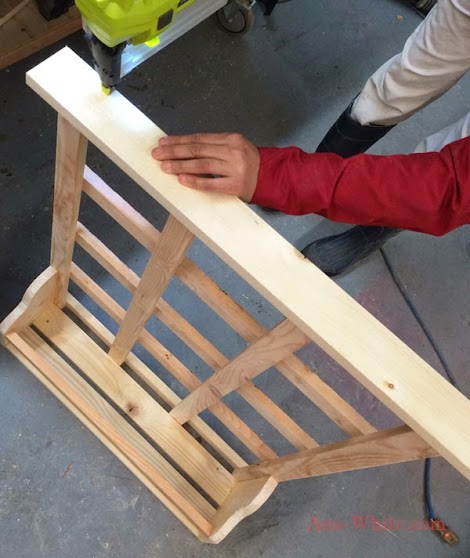
Decisions, decisions, on how to finish it!!!!!
I liked the idea of white, like a window grid. So I picked up 2 cans of RustOleum Paint + Primer for indoor/outdoor use.

Check out this sweet attachment, for spray paint cans!

It was nice and comfortable to spray with, and seemed to have really nice even coverage!

Then for the utensil hooks, I got some cup hooks and dressed them up a bit with this RustOleum Hammered finish spray paint!

Bye bye brass!
Now it was time to dress it up with all the trimmings and have a party!

She's a BEAUT!
And so functional, to have your grilling supplies right there, within easy reach!

Since the bottom is slatted, water won't pool on the bottom shelf, so perfect for exterior use.

But I also love indoor applications - think that dead space over the toilet with towels on the hooks, or even adding more hooks and hanging cups on the hooks for a little dish shelf!

Hope you love this little shelf as much as I do! If you build, please share!
Thanks for tuning in, can't wait to show you what's in store for next week!
Jen
